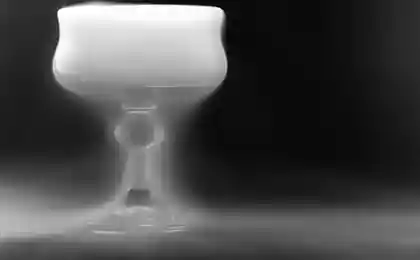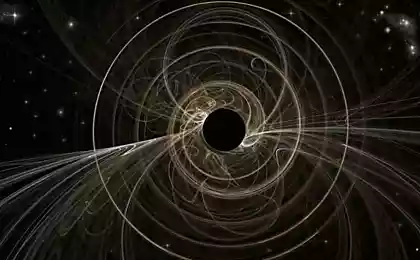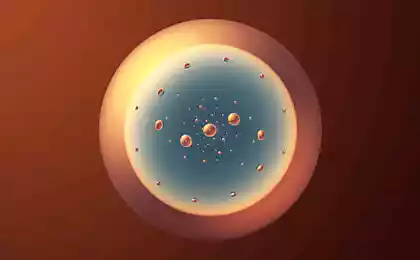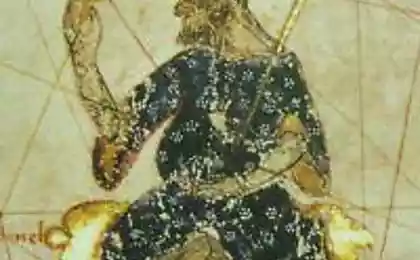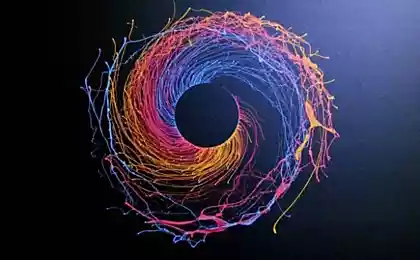446
Physicists have discovered a new electronic state of matter
A group of physicists from the United States and Israel have discovered a new state of matter characterized by an unusual ordering of the electrons. "The opening of this state was wholly unexpected, and not based on any prior theoretical predictions. The whole field of electronic materials based on the search for new States, which provide a platform to search for new macroscopic physical properties," says Dr. David CoE of the California Institute of technology in Pasadena, California.
Dr. Xie and his colleagues from tel Aviv University, Caltech, the University of Iowa and the University of Kentucky made the discovery, testing, laser measurement, recently developed to search for the so-called multipolar order.

"To understand a multi-polar order, first imagine a crystal with electrons, which move through its interior. Under certain conditions, these charges may be energetically favorable to accumulate a regular recurring image in this crystal, forming so-called charge-ordered state," say the researchers.
"Brick this type of order, namely the charge is simply a scalar quantity — that is, can be described by a simple numeric value or variable. In addition to charge, electrons also have a degree of freedom, known as spin".
"When the spins line up parallel to each other, they form a ferromagnet. Since spin has both magnitude and direction of the ordered spin state is described by a vector".
For several decades, scientists have developed sophisticated methods for finding both of these conditions.
"But what if the electrons in the substance does not line up with either of these methods? In other words, what if this procedure will not be described by a scalar or a vector, but something with more dimension, like the matrix?
This can occur, for example, if a building block of the ordered state was a pair of oppositely directed spins, described by the so-called magnetic quadrupole. Such examples multipolar ordered States of matter are difficult to detect using conventional experimental probes".
As it turned out, the new state, which found Dr. CoE and his colleagues, represents such type of a multipolar order. To identify the multipolar order, the team used a so-called effect of generation of optical harmonics, which manifests itself in all solids, but is usually very weak.
"Usually when you look at an object, illuminated by the light of a single frequency, all the light that you see reflected from the object with the same frequency. When you point the red laser pointer on the wall, your eye will detect the red light".
"However, for all materials a small amount of light is reflected a multiple of the incoming frequency. Thus, with the red pointer is also a little blue light Bouncing off the walls. You just won't see it because of the small percentage of the total light. These multiplicities are called optical harmonics".

Physicists have used the fact that the change in the symmetry of the crystal affect the strength of each harmonic differently. Since the emergence of a multipolar ordering changes the symmetry of the crystal in a specific way, scientists thought that the response of the optical harmonics from a crystal can serve as a fingerprint of a multipolar order.
"We found that light reflected at the frequency of the second harmonic shows a set of symmetries that are completely different from the inherent crystal structure, and this effect was completely absent the light reflected at the fundamental frequency. It was a clear fingerprint of a particular type multipolar order," Xie said.
Special compound, which is studied by scientists, was strontium iridium oxide (Sr2IrO4).
Over the last few years strontium iridium oxide was interested in very many due to certain features that it shares with the compounds based on copper oxide (cuprate). Like cuprates, aridity are electrically insulating antiferromagnets which become more and more metal as you add or remove electrons through a process of chemical doping.
High level of doping turns in cuprate high-temperature superconductor, and when cuprate pass from insulators to superconductors, they first pass through a mysterious phase known as the "pseudogap" (pseudogap) during which necessary additional amount of energy to eject electrons from the material.
For many years physicists argued about the origin of the pseudogap and its relation to superconductivity — whether it is an obligatory precursor of superconductivity or a competitive state with a certain set of symmetry properties. If you understand this relationship better, you might be able to develop superconductors that operate at near room temperatures.
Recently, the pseudogap phase was also observed in strontium iridium oxide. Dr. Xie and colleagues found that a multipolar order, which they have determined exists in the window of doping and temperature, where the pseudogap is present.
"Given the very similar phenomenology of the cuprates arigatou and perhaps aridity will help us to solve some of the longstanding debate about the relationship between pseudoelt and high temperature superconductivity, says Dr. CoE. — This finding emphasizes the importance of developing new tools that will help to uncover new phenomena. In addition, these multipolar orders can be and many other materials. Sr2IrO4 is the first thing we looked, therefore, these orders may disappear and other substances, and that is what we will search farther."
The work of scientists was published in the journal Nature Physics. published
P. S. And remember, just changing your mind — together we change the world! © Join us at Facebook , Vkontakte, Odnoklassniki
Source: hi-news.ru
Dr. Xie and his colleagues from tel Aviv University, Caltech, the University of Iowa and the University of Kentucky made the discovery, testing, laser measurement, recently developed to search for the so-called multipolar order.

"To understand a multi-polar order, first imagine a crystal with electrons, which move through its interior. Under certain conditions, these charges may be energetically favorable to accumulate a regular recurring image in this crystal, forming so-called charge-ordered state," say the researchers.
"Brick this type of order, namely the charge is simply a scalar quantity — that is, can be described by a simple numeric value or variable. In addition to charge, electrons also have a degree of freedom, known as spin".
"When the spins line up parallel to each other, they form a ferromagnet. Since spin has both magnitude and direction of the ordered spin state is described by a vector".
For several decades, scientists have developed sophisticated methods for finding both of these conditions.
"But what if the electrons in the substance does not line up with either of these methods? In other words, what if this procedure will not be described by a scalar or a vector, but something with more dimension, like the matrix?
This can occur, for example, if a building block of the ordered state was a pair of oppositely directed spins, described by the so-called magnetic quadrupole. Such examples multipolar ordered States of matter are difficult to detect using conventional experimental probes".
As it turned out, the new state, which found Dr. CoE and his colleagues, represents such type of a multipolar order. To identify the multipolar order, the team used a so-called effect of generation of optical harmonics, which manifests itself in all solids, but is usually very weak.
"Usually when you look at an object, illuminated by the light of a single frequency, all the light that you see reflected from the object with the same frequency. When you point the red laser pointer on the wall, your eye will detect the red light".
"However, for all materials a small amount of light is reflected a multiple of the incoming frequency. Thus, with the red pointer is also a little blue light Bouncing off the walls. You just won't see it because of the small percentage of the total light. These multiplicities are called optical harmonics".

Physicists have used the fact that the change in the symmetry of the crystal affect the strength of each harmonic differently. Since the emergence of a multipolar ordering changes the symmetry of the crystal in a specific way, scientists thought that the response of the optical harmonics from a crystal can serve as a fingerprint of a multipolar order.
"We found that light reflected at the frequency of the second harmonic shows a set of symmetries that are completely different from the inherent crystal structure, and this effect was completely absent the light reflected at the fundamental frequency. It was a clear fingerprint of a particular type multipolar order," Xie said.
Special compound, which is studied by scientists, was strontium iridium oxide (Sr2IrO4).
Over the last few years strontium iridium oxide was interested in very many due to certain features that it shares with the compounds based on copper oxide (cuprate). Like cuprates, aridity are electrically insulating antiferromagnets which become more and more metal as you add or remove electrons through a process of chemical doping.
High level of doping turns in cuprate high-temperature superconductor, and when cuprate pass from insulators to superconductors, they first pass through a mysterious phase known as the "pseudogap" (pseudogap) during which necessary additional amount of energy to eject electrons from the material.
For many years physicists argued about the origin of the pseudogap and its relation to superconductivity — whether it is an obligatory precursor of superconductivity or a competitive state with a certain set of symmetry properties. If you understand this relationship better, you might be able to develop superconductors that operate at near room temperatures.
Recently, the pseudogap phase was also observed in strontium iridium oxide. Dr. Xie and colleagues found that a multipolar order, which they have determined exists in the window of doping and temperature, where the pseudogap is present.
"Given the very similar phenomenology of the cuprates arigatou and perhaps aridity will help us to solve some of the longstanding debate about the relationship between pseudoelt and high temperature superconductivity, says Dr. CoE. — This finding emphasizes the importance of developing new tools that will help to uncover new phenomena. In addition, these multipolar orders can be and many other materials. Sr2IrO4 is the first thing we looked, therefore, these orders may disappear and other substances, and that is what we will search farther."
The work of scientists was published in the journal Nature Physics. published
P. S. And remember, just changing your mind — together we change the world! © Join us at Facebook , Vkontakte, Odnoklassniki
Source: hi-news.ru
